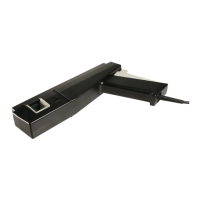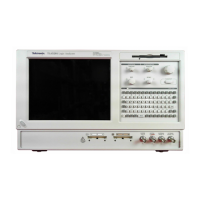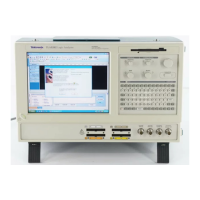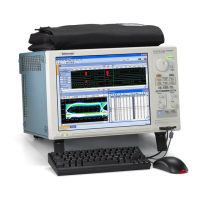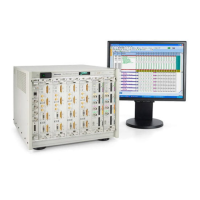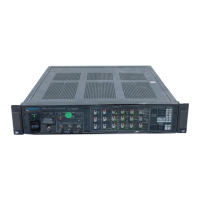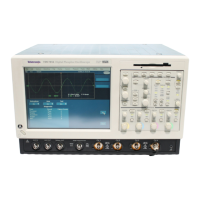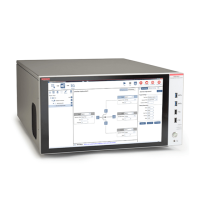Reference
A s ingle-ended
measurement can also be made using a TriMode tip in its
differential input mode. In this case, the single-ended signal to be measured would
be wired to the probe tip A input signal via and the DUT ground reference would
be wired to the probe tip B input signal via. No probe tip ground via connection
needs to be made with this measurement configuration. Selecting differential
input mode enables an A input signal measurement relative to the DUT ground on
the B input.
In differential input mode both the A offset and B offset settings will
affect the measurement. Using the example of a 2.5 V CMOS logic signal, the A
offset should again be set to the center of the logic swing at +1.25 V, but the B
offset should be set to 0 V to match the DUT ground reference connection.
The dynamic range of the TekFlex solder-in tips limits their use to CMOS logic
with a signal swing of no more than 2.5 V. The P77BRWSR Browser probe tip has
a larger dynamic range of 6 V
p-p
, which should allow measurements of both 3.3 V
CMOS logic and 5 V CMOS logic signals. Since the P77BRWSR tip operates
only in d
ifferential input mode, the browser tip B input connection should be
made to the s ingle-ended DUT ground reference. For a 5 V CMOS logic signal
measurement example, the A offset voltage should be set to +2.5 V, which is the
center of a 5 V CMOS logic swing, and the B offset voltage should again be set to
0VtomatchtheDUTgroundreference.
Differential probes are also ideal for a class of single-ended measurements where
the reference voltage is not ground:
DDR (SSTL_2, STTL_18, SSTL_15): V
TT
,V
REF
=V
DD
÷2
PECL: V
REF
=V
CC
-1.3
To measure single-ended signals in this class, connect the B input of the probe
to V
REF
.
A differential probe in these applications displays the true signal despite any AC
or DC variation in V
REF
from its nominal value. A single-ended probe displays
the signal plus the variation in V
REF
. Differential probes can also be used to make
ground referenced single-ended meas urements on either single-ended signals or
differential signals like PCI Express or Serial ATA.
Differential measurements
A differential probe is optimized to measure high speed differential signals.
Differential signals are formed from two complementary signals with a common
reference voltage. (See Figure 22.)
Devices designed for differential measurements avoid problems presented by
single-ended systems. Differential signal transmission improves signal fidelity
by doubling the effective signal amplitude compared to single-ended signal
transmission. Differential signaling also improves signal fidelity by removing
common mode noise due to the CMRR of the receiver or measurement device.
32 P7700 Series TriMode Probes Technical Reference
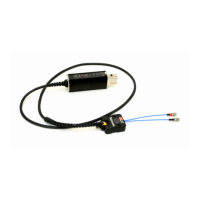
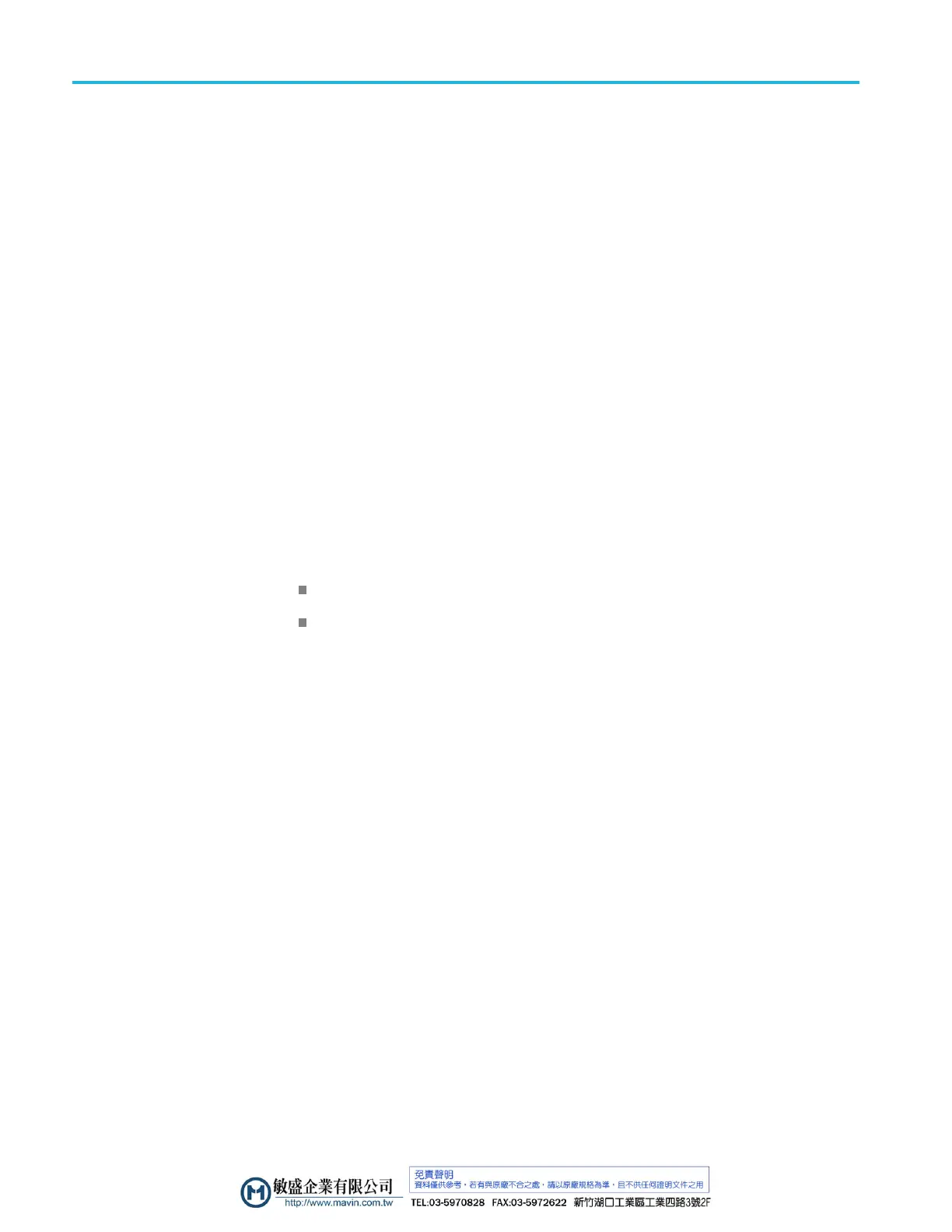